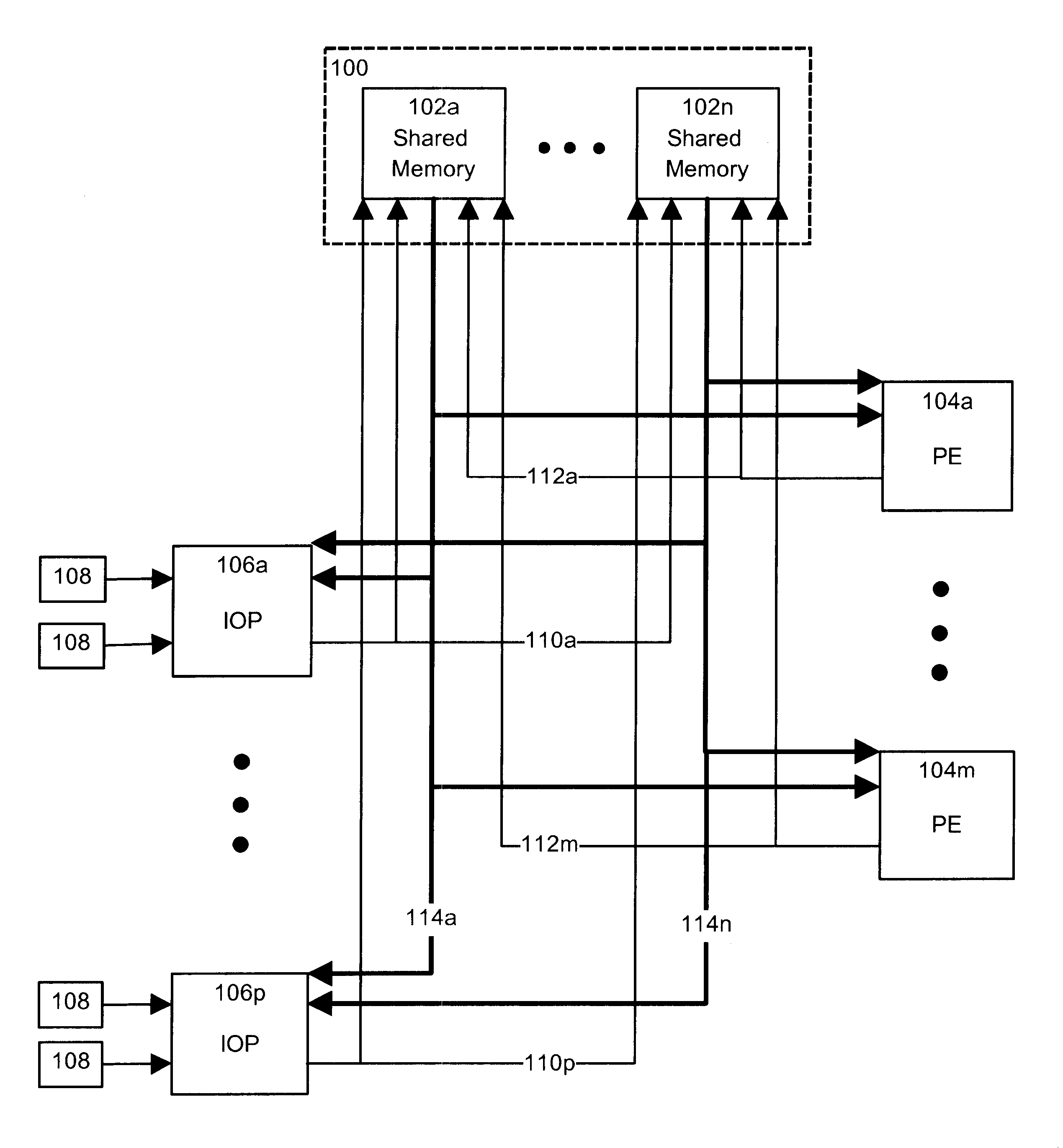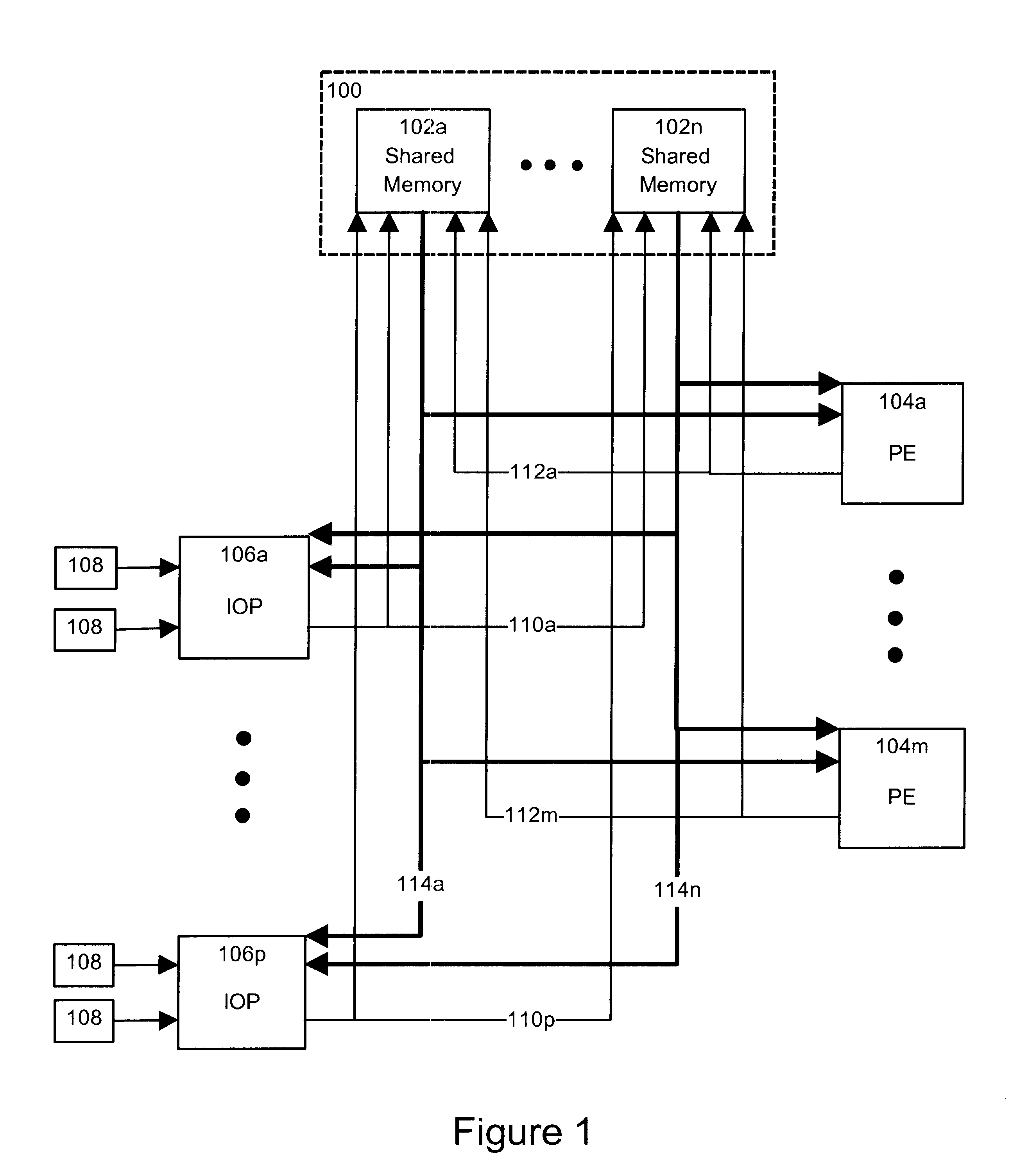Method and apparatus for exchanging data between transactional and non-transactional input/output systems in a multi-processing, shared memory environment
a technology of multi-processing and shared memory, applied in data conversion, multi-programming arrangement, program control, etc., can solve problems such as the inability to dequeue data elements
- Summary
- Abstract
- Description
- Claims
- Application Information
AI Technical Summary
Benefits of technology
Problems solved by technology
Method used
Image
Examples
Embodiment Construction
FIG. 1 illustrates the architecture of a multiprocessor, shared memory computing system in accordance with a preferred embodiment of the present invention. The system comprises shared memory 100, which in turn comprises a plurality of shared memory modules 102a to 102n (collectively and individually referred to as 102). Interconnected with shared memory 100 are a plurality of processing elements (PEs) 104a to 104m (collectively and individually referred to as 104) and a plurality of input / output processors (IOPs) 106a to 106p (collectively and individually referred to as 106). Connected to each IOP 106 is one or more input / output peripherals 108. Such peripherals may include disk and tape storage devices or communications interfaces such as OC3 interfaces.
The architecture of the multiprocessor system shown in FIG. 1 allows scalable processing using one or any other number of PEs 104, up to the limit of physically available slots. The system may be reconfigured simply by inserting a ...
PUM
 Login to View More
Login to View More Abstract
Description
Claims
Application Information
 Login to View More
Login to View More - R&D
- Intellectual Property
- Life Sciences
- Materials
- Tech Scout
- Unparalleled Data Quality
- Higher Quality Content
- 60% Fewer Hallucinations
Browse by: Latest US Patents, China's latest patents, Technical Efficacy Thesaurus, Application Domain, Technology Topic, Popular Technical Reports.
© 2025 PatSnap. All rights reserved.Legal|Privacy policy|Modern Slavery Act Transparency Statement|Sitemap|About US| Contact US: help@patsnap.com



